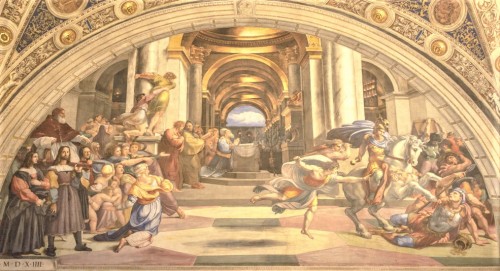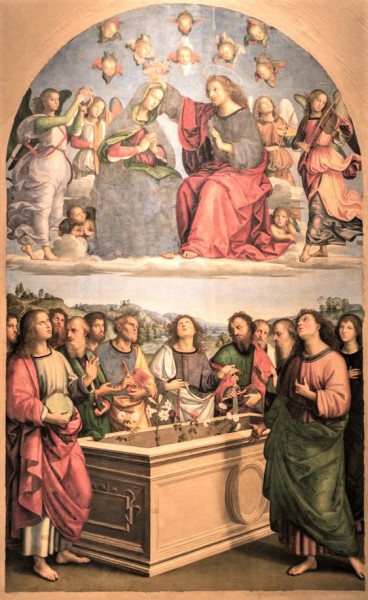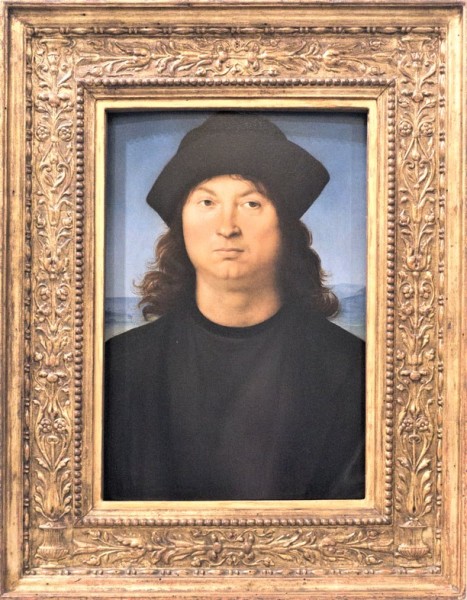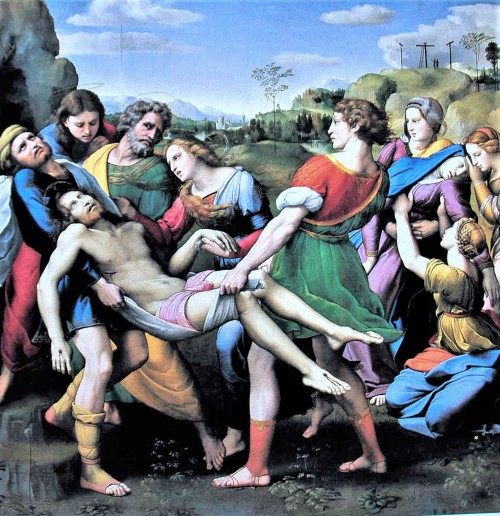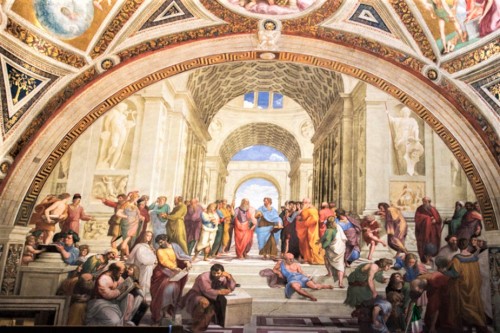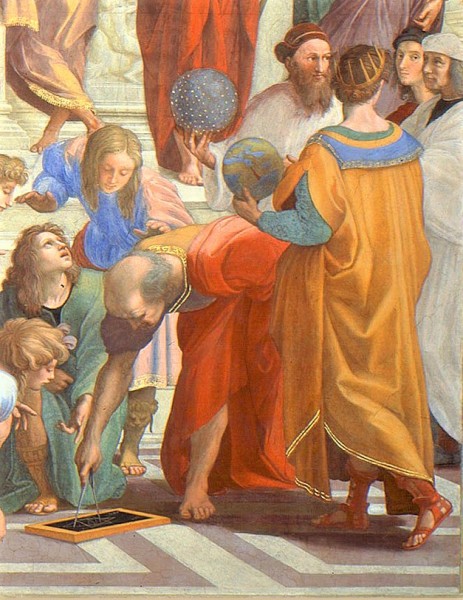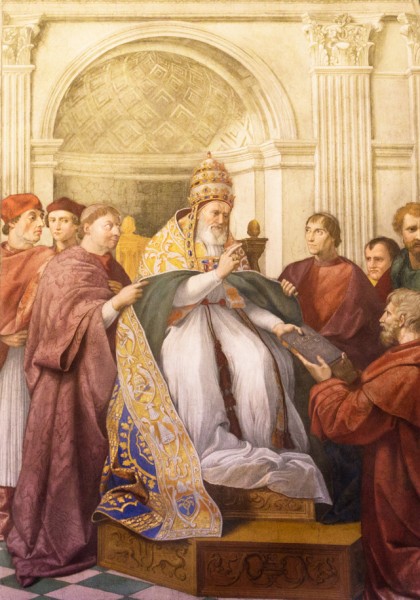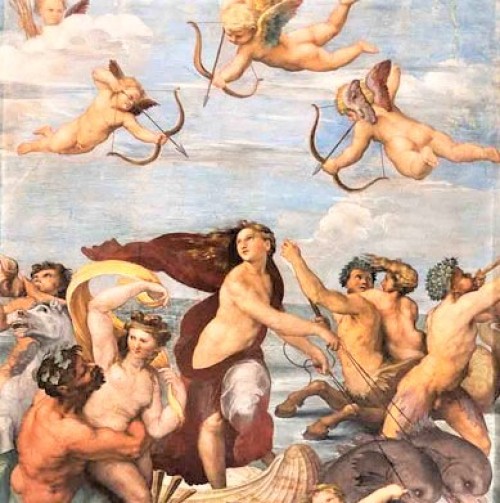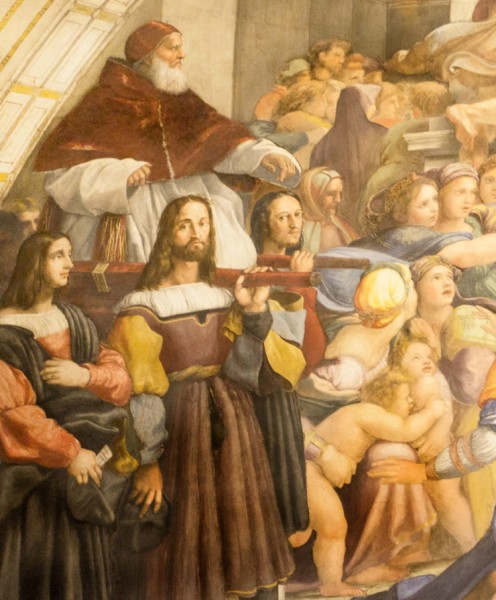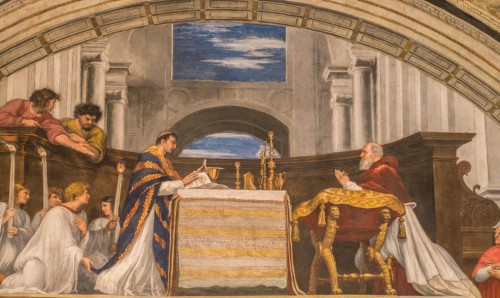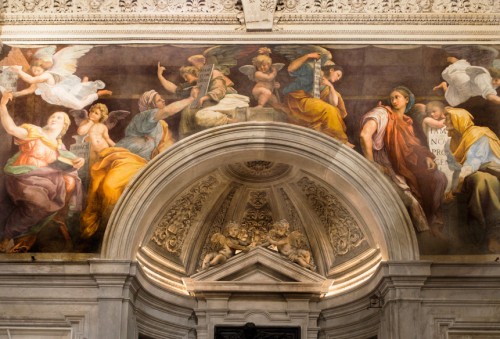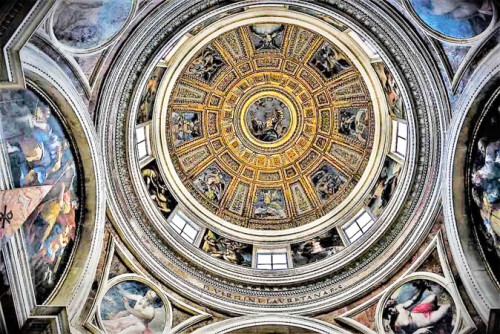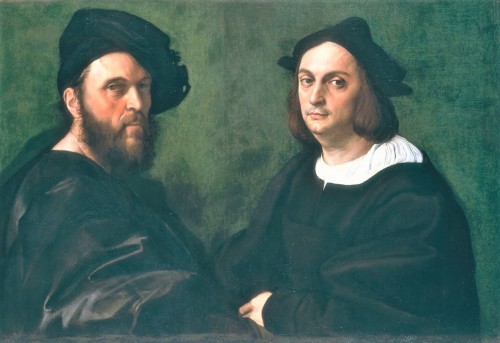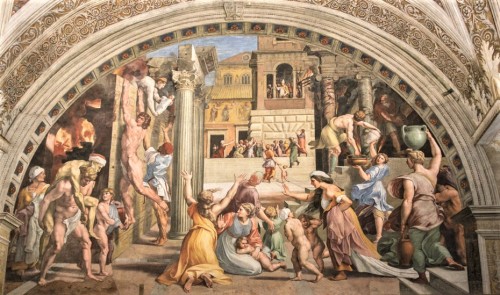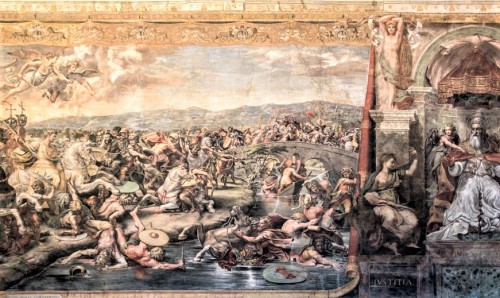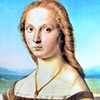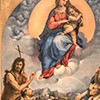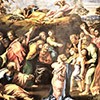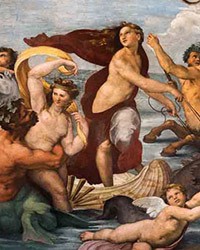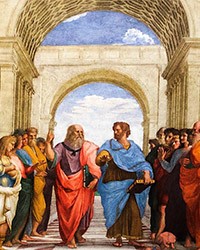Reportedly the antidote for these romantic endeavors was to be a marriage, which was arranged by friends of the artist, and not just with anyone, but with a relative of Cardinal Bibbiena. However, Raphael took so much time in making up his mind, that finally the idea was abandoned, which was probably accepted with relief by the painter, especially since at that time he was enamored with the legendary baker’s daughter, whose portrait (La Fornarina), he kept in his workshop until his death. It seems that Raphael worked constantly on new projects, that is why it is difficult to comprehend Vasari's complaints.
His talents truly blossomed during his stay in Rome, where for twelve years he created his most outstanding works, thus becoming one of the greatest artists of the Renaissance. Still today, we can find a large collection of his works in the city on the Tiber and it is to them that this text will be devoted.
Raphael’s first teacher was his father Giovanni, a painter in the court of Urbino, known for its love of intellectual culture, propagated by Duke Federico da Montefeltro. After his father’s death, the boy was sent to master Perugino, a leading representative of the Umbrian school. The aftermath of this period is the Oddi Altar (The Coronation of the Virgin). And while the work was painted by Raphael, we could almost assume it was painted by his teacher. It was thanks to him that Raphael began using the compositional scheme with figures whose heads were arranged in a single line, the division into spheres (earthly and heavenly), as well as certain statics of the presented figures. Starting in 1504 the painter spent the next four years in Florence, where he became familiar with the works of Leonardo da Vinci, Botticelli, and Fra Bartolomeo. At this time he got to know their way of painting, which is testified to by his Young Woman with Unicorn, a work characterized by a subtle color scheme, gentle light, elegance, and charm, but also naturalness, and the so often praised in his work graceful sweetness. All these features are also exhibited by the numerous Madonnas with Child created at that time. However, Raphael left Florence and at the young age of 25 came to Rome. His fame preceded him. Reportedly, as Vasari claimed, he was helped in this regard by his distant relative Donato Bramante, who held the post of the head constructor of the Vatican Basilica. The young artist came to Rome in 1508 and remained until his premature death, initiating and co-creating the culture of the reborn city. As it would turn out later, Pope Julius II, wanted the Eternal City to become not only the center of the Christian world but of the artistic one as well. He employed Raphael to participate in the creation of one of his private apartments, but seeing his talent, enthusiasm, and consistency, he thanked the other painters for their services and entrusted Raphael with the complete decoration of his library (Stanza della Segnatura). The frescoes completed within brought renown to the young artist. He became famous and was invited by humanists such as cardinal Bibbiena. He took part in philosophical disputes and poetry evenings in the company of Castiglione, Pietro Aretino, but he most often visited the rich banker and patron of the art of those times – Agostino Chigi. And it was for him, or more appropriately for his newly built urban villa (Farnesina), that Raphael personally painted on of the frescoes – The Triumph of Galatea. However, he did not have much time for commissions “on the side”, since independently of the portraits and reredoses he created, the pope desired to see his apartments prior to his death. However, he did not live to see it – dying in 1513 when works in the second apartment (Stanza di Eliodoro), had just begun.

The next pope, Leo X, took over not only the papal throne form Julius II but also the admiration of Raphael's works. He was a dignitary with a refined artistic taste and a great enthusiast of antiquity. Italian humanists, who quickly found their home in the papal court, praised him as the second Augustus – a patron of the art, who will lay the foundation for a golden age of science and a return to the glory days of antiquity. On the other hand, Raphael found in him a proponent of Roman historical sites. Desiring to save them from falling into ruin, the pope established the office of a sort of chief monument conservator, which Raphael headed. In addition, the artist became a papal prefect, an advisor on matters of art, but most importantly a court painter. He also worked on subsequent decorations of papal apartments, however, he entrusted their completion and more often than not compositions to his numerous collaborators. He simply had no time to complete them personally. A young, inexperienced, as it may seem, artist, was entrusted with the task, which had the full attention of the pope – further works on the Basilica of San Pietro in Vaticano. After the death of Donato Bramante, Raphael took over these works and what did he do? Most importantly… he changed the design. The central building under his guidance was transformed into a basilica.
At that time Raphael enjoyed the fame of an unmatched talent. All of those who could afford him competed for his services, including Agostino Chigi, who was able to appease the pope and acquire the painter for his plans – the decoration of family chapels and the decoration of the loggia of his villa. A the same time, Raphael also had to find the time to make portraits of his friends, patrons, rulers, as well as Pope Leo X and his nepots. But that is not all. Among the lesser-known frescoes are those painted in the Apostolic Palace for cardinal Bibbiena. The painter, who was a friend of the clergyman, completed designs of paintings which were to adorn his bathroom and logietta in a style relating directly to Roman painting (the Pompeian style) with centrally placed landscapes and grotesques, shells, and putti surrounding the whole.
At that time magnificent large-format religious works were also created, such as the Sistine Madonna, St. Michael Defeating Satan, and The Visitation. The pope also entrusted Raphael with finishing the works on a loggia (Raphael’s loggia) started by Bramante, which the artist completed while also creating a design of the decorations which were to appear there. They deserve to be mentioned, as they are not only a type of a response to the works of Raphael’s artistic rival – Michelangelo and his scenes from the Genesis shown on the vault of the Sistine Chapel but also a great hymn of praise for antiquity. The walls and ceilings of the loggia are adorned with grotesques, medallions, and coffers made of stucco, motifs taken from Roman art, which had just been discovered in Nero's Palace (although at that time it was still unknown that it belonged to him), which became a more and more often used decorative motif of the Renaissance era. Above the arcades of the spans, there are figurative scenes depicting the individual episodes from the Old and New Testament. The so-called Raphael's Bible consisted of 53 scenes designed by the artist and completed by his students and collaborators (Giulio Romano, Gianfrancesco Penni, Perino del Vaga).
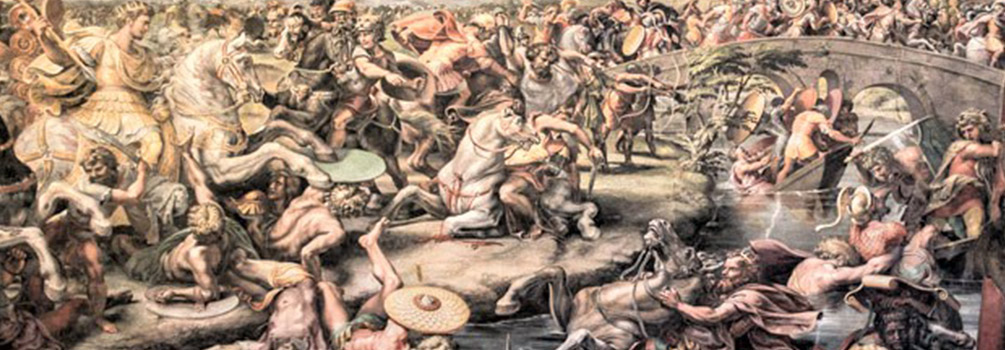
His next work had to please Leo X and satisfy the artist. These were cartoons to tapestries, which were to be located in the lowest part of the Sistine Chapel. In this way, the building decorated with the greatest works of the artists of the Renaissance (including Michelangelo), was supplemented by Raphael. Ten tapestries (only seven remain) created based on these cartoons in Brussels, show the scenes from the lives of the two most important in Rome apostles h St. Peter and St. Paul. Some of these (e.g. The Miraculous Draught of Fishes, The Conversion of St. Paul) are masterpieces of their kind. In 1519 the completed tapestries were exhibited in the place they were destined for.
The task on which the artist worked since 1518 was the altarpiece showing The Transfiguration. And it was this unfinished painting that found itself at Raphael’s bedside when his body was laid out. A fever that was difficult to diagnose turned into a dramatic struggle for life, which the young artist lost on the day of his 37th birthday. We do not know what was this mysterious illness. Apart from a venereal disease, tuberculosis, or malaria, there is also talk of a weakening due to a rather typical at that time procedure, bloodletting. It was the painter’s wish to be buried in the grandest structure of antiquity – the Pantheon. In a niche which hides his sarcophagus, there is an inscription: “Here lies Raphael, by whom Nature feared to be outdone while he lived, and when he died, feared that she would die with him"
The most important of Raphael’s works in Rome:
- The Coronation of the Virgin, 1504, Musei Vaticani – Pinacoteca Vaticana
- Portrait of a Man, 1504, Galleria Borghese
- Young Woman with a Unicorn, 1506, Galleria Borghese
- The Deposition, 1507, Galleria Borghese
- Stanza della Segnatura, 1511, Apostolic Palace
- The Triumph of Galatea, 1512, Villa Farnesina
- The Prophet Isaiah, 1512, Basilica of Sant’Agostino
- Madonna di Foglino, 1512, Musei Vaticani – Pinacoteca Vaticana
- Stanza di Eliodoro, 1514, Apostolic Palace
- Design of painting decorations (Sibyls and Prophets), 1514, Chigi Chapel, Basilica of Santa Maria della Pace
- Design of the Chigi Chapel and the decorations of its dome, 1514, Basilica of Santa Maria del Popolo
- Logietta and bathroom for cardinal Bibbiena (decoration design), 1516, Apostolic Palace
- 10 tapestries for the Sistine Chapel, 1516, Musei Vaticani (Pinacoteca Vaticana), according to Raphael’s cartoons which are found in the London National Gallery
- Portrait of Two Men, 1516, Galleria Doria-Pamphilj
- Stanza dell’Incendio di Borgo, 1517, Apostolic Palace
- Design of painting decorations (The Marriage of Cupid and Psyche) 1517, loggia of the Villa Farnesina
- La Fornarina, 1518–1520, Galleria Nazionale, Palazzo Barberini
- Raphael’s Loggia, design of painting decorations, 1519, Apostolic Palace
- Stanza del Constantino (finished by the artist’s students), Apostolic Palace
- The Transfiguration, 1517–1520, Musei Vaticani (Pinacoteca Vaticana)
- Design of the villa Madama on Monte Mario hill for Cardinal Giulio Medici, 1518
If you liked this article, you can help us continue to work by supporting the roma-nonpertutti portal concrete — by sharing newsletters and donating even small amounts. They will help us in our further work.
You can make one-time deposits to your account:
Barbara Kokoska
BIGBPLPW 62 1160 2202 0000 0002 3744 2108
or support on a regular basis with Patonite.pl (lower left corner)
Know that we appreciate it very much and thank You !

